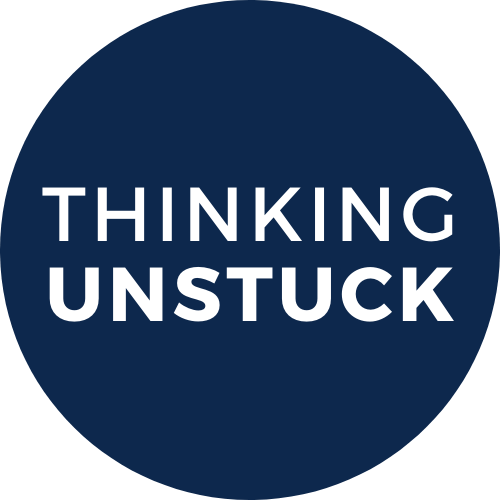‘The Covid-19 crisis calls for right brain thinking’ - a review of Orlando Wood’s ThinkTV webinar, April 30th, 2020
I’m a great believer in giving credit where it is due, and I want to start this piece with a shout-out to ThinkTV, an organization making a determined effort to help Canadian marketing and agency people understand what makes for effective advertising in the modern world. One way they do this is by regularly hosting – right here in Canada – the very best global effectiveness thinkers, so that we all have a chance to learn from them first-hand.
Indeed, the organization hosted an excellent half-day conference last October in Toronto featuring the latest work from globally renowned effectivness practitioners Mark Ritson and Peter Field. The event also featured the first Toronto appearance of Orlando Wood, with whom I was not familiar. I am glad it did, as it turns out that his ideas are in some ways the most interesting and radical of them all.
Wood is the author of Lemon, which is one of the most illuminating and important advertising books I have ever read.
His thesis is that we are in the midst of a developing ‘crisis in creativity’ and that this is exacerbating the trend towards short-term activation in the industry already well noted by people like Les Binet and Peter Field.
Indeed, put the two phenomena together and it is clear that brands are losing the ability to create the distinctive, emotionally resonant communications that they need for long term success. To anyone interested in long-term brand health, this should be deeply disconcerting.
The conceptual core of his book uses the familiar model of the two-sided brain but looks at in a more sophisticated way. So, instead of the simplistic black and white world of ‘right = creative’ and ‘left = rational’ Wood serves up something much more nuanced and useful.
As he puts it, the issue is not that the two sides of the brain do different things, but that they do things differently – and it is in these contrasting ways of processing the world that his explanation for our troubles lies.
His main theme is that we are living through a time in culture in which tropes that reflect and appeal to the left-hand side of our brains have become much more prevalent. These tropes are focused on what Wood calls ‘flatness and abstraction’, as opposed to the ‘depth and betweenness’ of tropes that are processed via the right brain.
As these left-brain tropes have moved across into advertising, the result has been creative that is often superficially striking but that leaves the viewer with little that is emotionally resonant and even less that is distinctive – think endless fast cuts, partial images, stock-style people, no ‘story’ as such. And this type of creative has crowded out tropes which appeal to the brain’s right side – recurring devices, whole scenes, relationships between characters, fully developed narratives. The challenge is that it is these that generate the holistic, complex and deep responses that brands need to evoke if they are going to build the long-term memory structures which reliably lead to the increased salience in buying situations that characterizes successful brands.
All this is backed up with a great deal of research evidence both from his company, System 1, and the now justly famous IPA Databank. It’s a compelling and troubling read.
So it was especially timely when ThinkTV recently hosted a webinar with Orlando Wood on how the Covid-19 pandemic is affecting the way in which people are perceiving advertising in this moment.
Based on comparative and up-to-date analysis by System 1 of hundreds of recent commercials in the UK and the US, his message was that Covid-19 may have changed the world, but that it has not changed the way in which people are consuming advertising. In fact, it seems to have increased people’s appetite for certain kinds of advertising – especially the kinds which appeal to the right-hand side of our brains.
Specifically, the kind of work that is connecting with people in this new world:
· Contains character-based ‘fluent devices’ (Wood’s term for elements of a campaign that are consistent across executions)
· Contains scenario ‘fluent devices’
· Celebrates the ‘betweenness’ of people’s lives and relationships
· Is set in or references the past
· Has a strong sense of place or community
And the kind of work that isn’t connecting:
· Is all about the hard sell
· Focuses on things, to the exclusion of people
· Panders to narcissism and self-image
· Is reliant on words on a screen
· Is aggressive, competitive or performance-focused
He makes the telling point that not only does this mean that brands do not need specific Covid-19 executions (although these can work well), but that they can – indeed should – continue to use pre-Covid work during this time, provided that it was actually connecting with people beforehand.
A brilliant example of this is the inspired recent re-release of the original commercial in Budweiser’s wonderful ‘Whassup?’ campaign from 20 years ago, tweaked appropriately for our strange times. Research shows that this ad has been welcomed back like a long-lost friend and is in fact out-performing the brand’s current work. If only there were more campaigns like it today.
Orlando Wood’s thoughtful, deeply perceptive and timely work shows why we need urgently to rediscover our collective ability to create such advertising if it is to help us successfully build brands in the future – whatever it looks like post-Covid.
[If this review has whetted your appetite for more detail than this space allows, then you can find the actual webinar here. As you may have gathered, I highly recommend both it and the book.]

